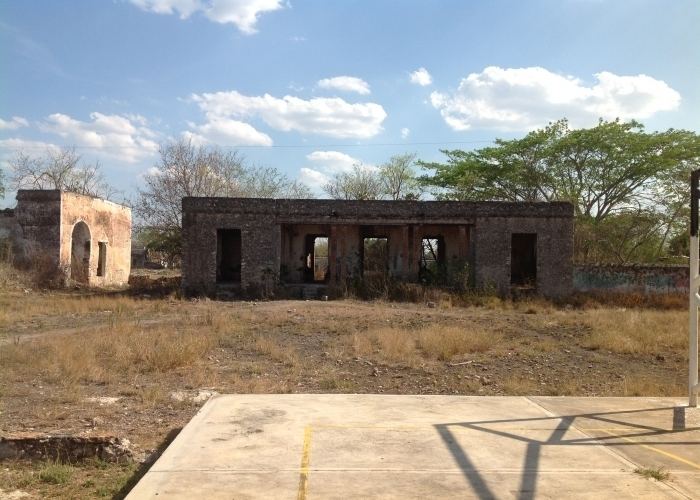Municipalities Abalá Postal code 97826 | Mexican States Yucatán Time zone CST (UTC−6) Area code 988 | |
 | ||
Hacienda Cacao is located off the Carretera Uman-Hopelceh (Uman-Hopelceh highway) within Abalá Municipality, Mexico, and is in the South West Region 8 area of the State of Yucatán. It is one of the properties that arose during the nineteenth century henequen boom, and was owned by José María Ponce.
Contents
Map of Cacao, Yucat%C3%A1n, Mexico
Toponymy
Cacao comes from ka'kaw, which in the Mayan language means "cocoa" (Theobroma cacao).
History
The hacienda was built by José María Ponce who issued his own hacienda tokens of special design in 1889 which are highly prized by coin collectors. Ponce grew henequén on the plantation, was considered a master at marketing sisal fiber, and used his profits for operating an ice factory, a chocolate factory and a brewery.
In 1918, at a fiesta held at the hacienda for the community, troubadour Enrique Galaz Chacón composed his first song, a bolero called Madrigal, which is the first known Yucatecan bolero.
In 1923 or 1924 the caretaker, his wife and 20 workers on the hacienda were killed by a group of outlaws led by the notorious bandit Braulio Euán, a personal friend of the Governor, José María Iturralde Traconis(es).
X'batún Cave is located south of the city of Mérida in a tiny village called San Antonio Mulix, bordering on the grounds of -and just down the road from - the former hacienda Cacao. The cave is 100 meters with an input 3.60 meters wide and 2.50 meters high. Access to the cave was sealed by a wall of dry stones placed together, which is now collapsed. The presence of complete human bones and fragments was noted by archeologists, as well as several fragments of vessels. The final chamber has a body of water 15 meters long. In this section were found 24 skulls and various bones.
Demographics
All of the henequen plantations ceased to exist as autonomous communities with the agrarian land reform implemented by President Lazaro Cardenas in 1937. His decree turned the haciendas into collective ejidos, leaving only 150 hectares to the former landowners for use as private property. Figures before 1937 indicate populations living on the farm. After 1937, figures indicate those living in the community, as the remaining Hacienda Cacao houses only the owner's immediate family.
According to the 2005 census conducted by the INEGI, the population of the city was 261 inhabitants, of whom 142 were men and 119 were women.
